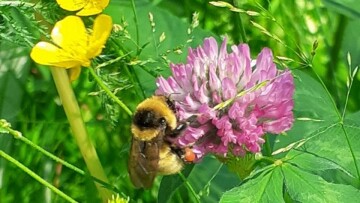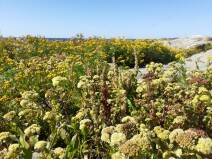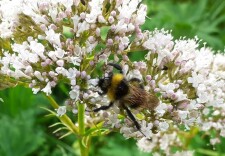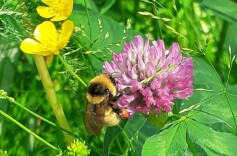"We need to take care of our environment in order to stop biodiversity loss"
Patrik Byholm works within the Faculty of Bioeconomy as the Head of Degree Programme for Natural Resource Management at Novia University of Applied Sciences.
From a young age, Byholm been interested in nature and knew early on that he would like to study something within that field. Byholm studied at the University of Helsinki where he completed his master’s thesis and PhD degree continuing on to work in academic research after graduation.
In 2011, Byholm joined Novia University of Applied Sciences and later went on to help found the Natural Resources Management Degree Programme within the Faculty of Bioeconomy. During 2020-2022, Byholm took sabbatical leave to return to the University of Helsinki and focus on research.
Although his earlier research career has been spent mostly focusing on birds, more recently, Byholm has also become interested in the study of bumblebees. Byholm explains that his current project is being conducted through Novia UAS and involves the study of bumblebees within Finland.
The team were intrigued to understand why some locations hosted a larger number of bumblebees whilst others had barely any.
For example, in location A, there might be hundreds or sometimes even thousands of bumblebees and in location B there may be none, regardless of the fact that these locations are only five kilometres apart.
In the coming summer, Byholm and his team will analyse their data and look further into the potential reasoning behind the differences in bumblebee numbers within different locations. The research team is hypothesising whether this could have something to do with food supply, overspill of bumblebees from area into another, or perhaps be related to the distance travelled by different species.
This research is based on an earlier project which was kick-started during the time Byholm was based at the University of Helsinki whilst on sabbatical. The aim of the original research was to see if bumblebees are indeed affected, as has been proposed, by pesticides and whether this might in fact be a reason for their general decline globally.
The field work was done in 2021, during which Byholm and his team found vast amounts of bumblebees within the southern and western parts of Finland where their research was conducted.
Byholm and his team were surprised to find out that, though some residue was found on the bumblebees, the pesticide residues were in much smaller quantities than they had initially expected.
Based on news regarding the decline of bumblebees, the team’s expectations of how polluted their samples would be had been much higher. However, around 80% of their samples were clear of any pesticide contamination which could be detected.
Byholm goes on to explain that, in Finland alone, there are some 30 different species of bumblebees and around 25 of those species are thought to have been located within the areas where the field research was conducted. Some species are good flyers and likely to travel up to several kilometres, even travelling across bodies of water, whilst others stay within the same 100 metre radius.
“Many people think that there are one or two, possibly a handful, of species but we actually have pretty many. Bumblebees are a group of insects that are adapted to cold environments so there’s a higher diversity of them in northern latitudes than southern ones”, Byholm continues.
The research team within the Faculty of Bioeconomy is small but diverse and focuses on a variety of research areas and topics ranging from marine and forest environments to how different species function within those environments.
Byholm has been part of the Natural Research Management since it was founded as a degree programme at Novia UAS. Byholm and his research team have been instrumental in taking the degree programme to where it is now through their research and varied projects.
“I’ve been around for so long already that I have been doing a lot of things within the field. I even have projects going on in Africa with corporate partners over there” says Byholm.
His main research interest has been birds but, since this degree programme is aimed at studying natural resources and their management, Byholm says it allows for a wider range of research focus areas where applied science projects can be conducted.
Additionally, Byholm has been working with the impacts of wind power on nature. It is green energy, but it also impacts on wildlife and affects the forest landscape. We may want to consider the effects it has on habitat loss, for example.
“Perhaps the most important thing for us active within the field of Natural Resources Management is to produce new knowledge about what we can do to try and lower the impact of our diverse actions on our environment?” Byholm says, before continuing to explain that the work further links to the overarching idea that we need to take care of our environment in order to stop biodiversity loss.
The links between each area of research within the field of bioeconomy is as intricate and interesting as the biodiversity of our environment itself, making it a fascinating field to study for those interested in nature and its interconnectedness with technology, green energy, pollution, and other aspects of modern human life which in one way or another has an impact on the environment around us.
Further information
Read more about the Natural Resource Management degree programme on novia.fi.
If you would like more information, please contact
Head of Degree Programme
Patrik Byholm
patrik.byholm@novia.fi
|
The most important resource for bumble bees is a high amount of flowers. Images and captions provided by Patrik Byholm. |
A male gypsy cuckoo bumblebee. This is a species that parasitizes in nests of other bumblebees and builds no nest of its own. |
A great yellow bumble bee queen. While now being rare in many parts of Europe, the species is still fairly common in Finland. |



